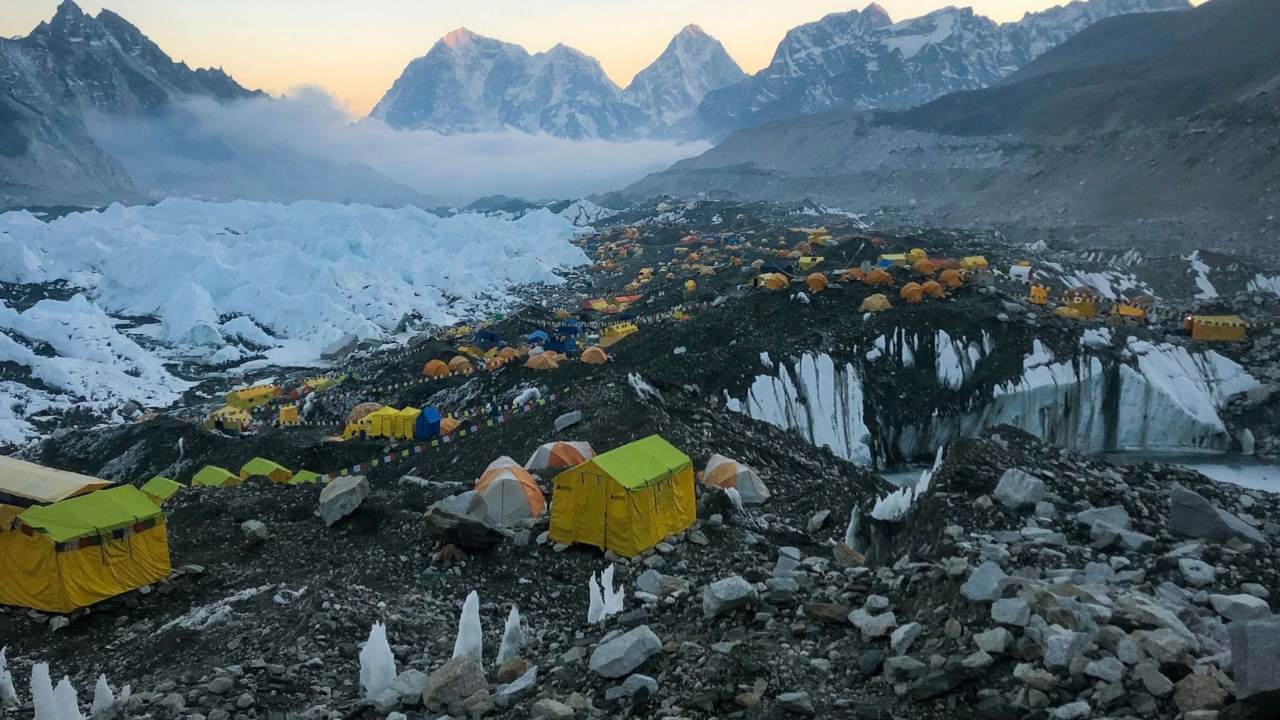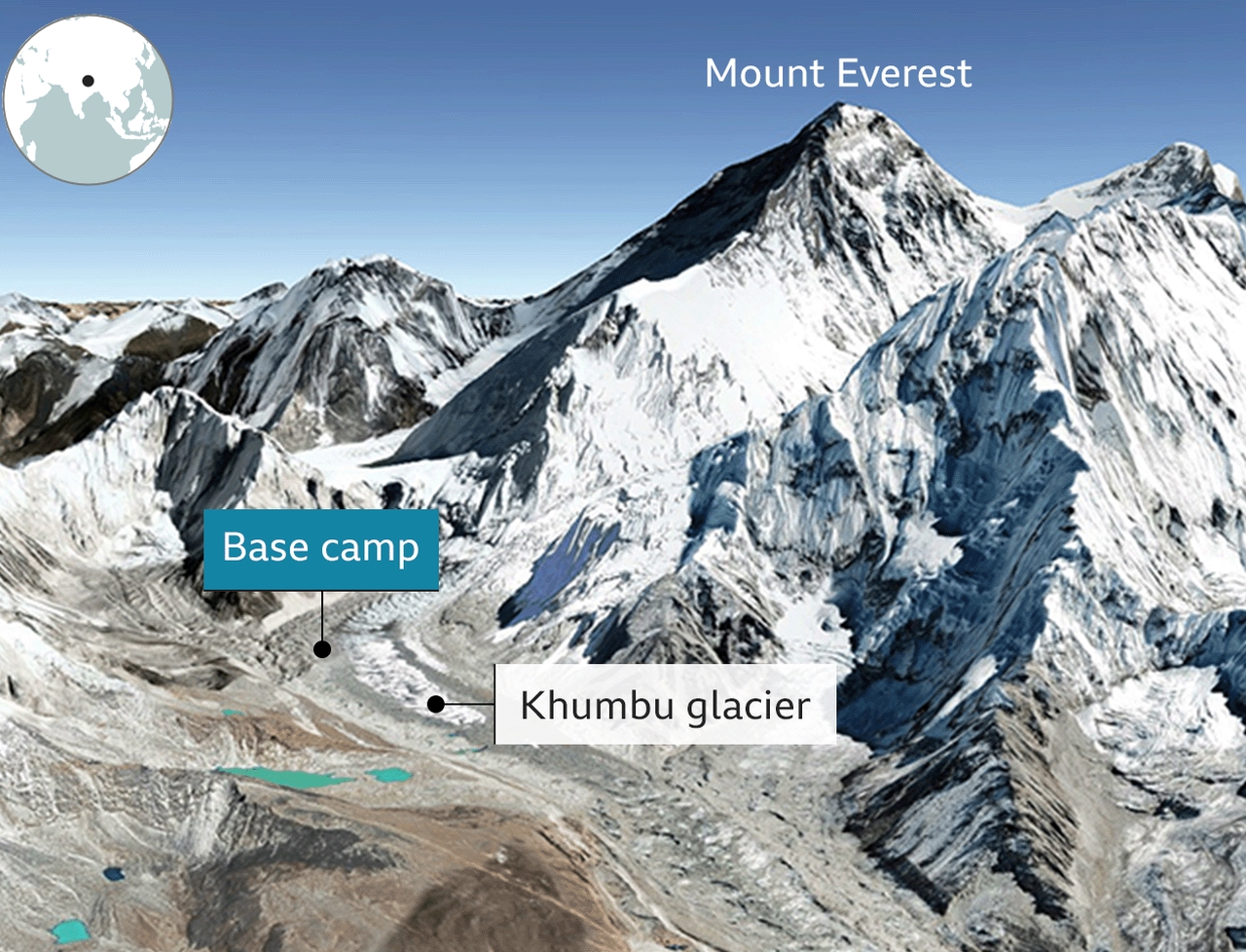Nepal Contemplates Moving Mt. Everest Base Camp Amid Risk of Melting Glacier
Sitting on the rapidly thinning Khumbu glacier about 1,500 people use the base camp every year during the spring climbing season

Image: Freddie Wilkinson/National Geographic
I often wonder about the towering Mount Everest, the planet’s highest mountain, how it came to be, and where it is heading to amid the climate crisis fiasco. Well, it came into existence after an upward thrust by tectonic action as the Indian-Australian Plate collided with the Eurasian Plate over 40-50 million years ago, and it continues to move a few inches to the northeast and rise a fraction of an inch each year. I thought Everest to be invulnerable, untarnished, and untainted by humans, until recently when traces of microplastics were found on the world’s highest mountain.
The base camp, located at an altitude of 5,364-metre, on the Khumbu glacier was already dotted with waste material left behind by the climbers. The rapidly changing climatic conditions and global warming are adding to the problem for the mountain. The Nepal government wants to move its Everest base camp as the Khumbu glacier is melting at a frightening pace, making the location unsafe.
Officials are trying to identify a new site at a lower altitude with no year-round ice. This relocation will create obstacles for the mountaineers, making the journey a bit long and tedious. However, it is probably the best to move the camp, because melt-water is destabilizing the glacier and climbers have noticed increasingly appearing crevasses at base camp each morning.

Image: Google Earth
Taranath Adhikari, director-general of the tourism department, Nepal, said;
We are now preparing for the relocation and we will soon begin consultation with all stakeholders. It is basically about adapting to the changes we are seeing at the base camp and it has become essential for the sustainability of the mountaineering business itself.
Various studies in the past have confirmed that the glaciers close to the Everest summit are depleting at a worrying rate owing to global warming. This depletion further has multifold implications as the Himalayan glaciers provide a significant amount of water resources for millions of people residing in South Asia.
Earlier this year, researchers in Nepal notified that the highest glacier on the top of Mount Everest could vanish by 2050 as the 2,000-year-old ice cap on the world’s tallest mountain is receding at a disturbing rate.
Well, I suppose Everest isn’t as invulnerable as I earlier believed it to be. The majestic landmark is threatened by every possible man-made disaster including plastic pollution and rising temperatures.
Via: Business Standard


